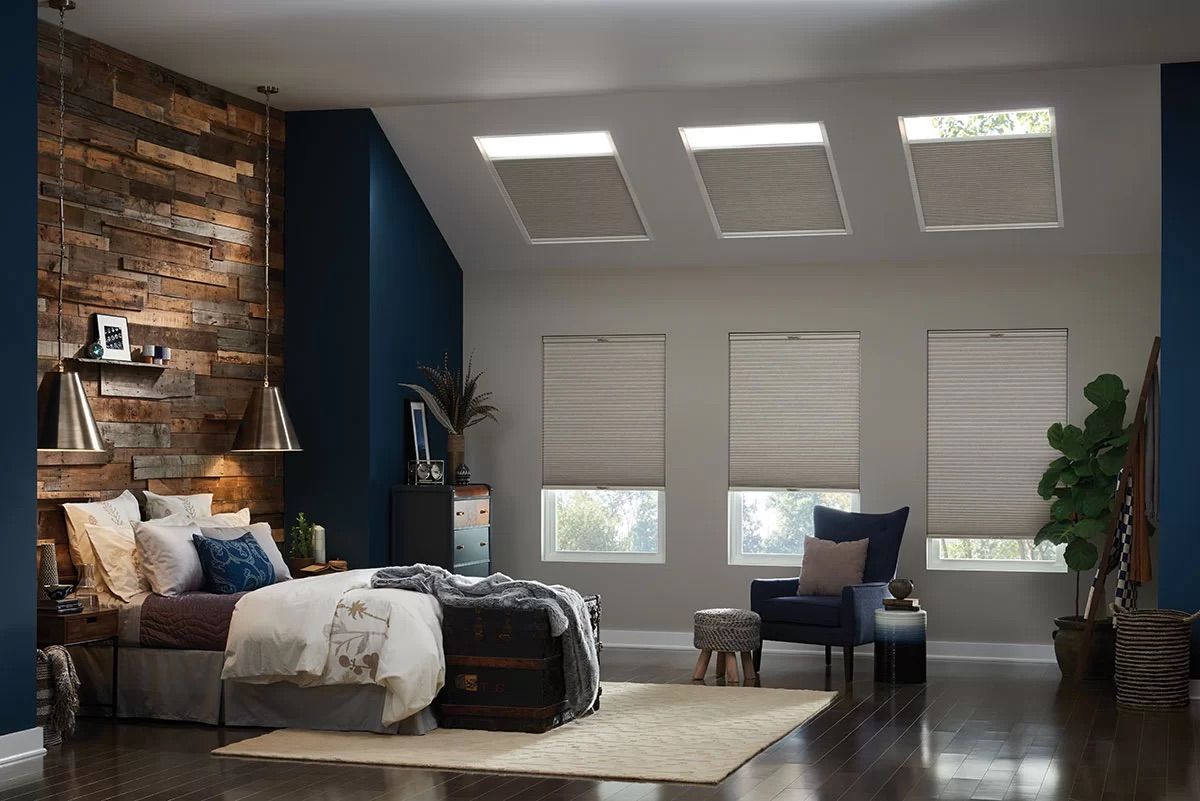Navigating that immense field of blinds, shades and other window covering options on the market can be challenging, but no matter if you are buying and installing those products yourself or hiring out the work, personal preference, priorities and price will likely be key factors in the final decision-making process.
 Blinds can help save on your heating and cooling bills and protect your furniture and flooring from sun damage. (Factory Rep Blinds)
Blinds can help save on your heating and cooling bills and protect your furniture and flooring from sun damage. (Factory Rep Blinds)According to Brianne Stretch, who owns Fabric Works, the products you purchase now will be saving you money long after summer ends. “The shades that you get that help you protect your furniture and your flooring from the sun and the heat, they’re still going to help control the cold during the winter, and they’re still going to give you that sun control because you’re still getting the same amount of UV rays coming in through those windows,” Stretch said.
The heat lost and gained through windows can be significant. According to the U.S. Department of Energy, about 30% of a home’s heating energy is lost through windows. In cooler seasons, about 76% of the sunlight that falls on standard double-pane windows enters to become heat.
While even the most basic window covering products typically provide some level of light filtering, cooling or insulation, there are definitely tiers of efficiency. For those on a budget, Gerry Yates, who owns Factory Rep Blinds, suggests roller shades, horizontal faux wood blinds and especially vertical blinds, which work well with larger windows and sliding glass doors.
“You can see through them a little bit when they’re tilted, and they protect you from sunlight, so they have a lot of benefit,” Yates said. Using window coverings in specific rooms only, such as those being hit hardest by the sun, is another way to cut costs. “I do a lot of the screen shades in those settings because they’re less expensive, and they block the sun,” Stretch said. “They protect the furniture, but they’re just not quite as good with that hot and cold,” she added.
Honeycomb cellular shades are one of the most cost-effective window-covering choices for energy savings and privacy. The shades, which are available in hundreds of colors and multiple styles, are capable of filtering light by more than 90% and operate by trapping air around windows with one or more cell pockets.
“They pay for themselves in a very short time,” said Yates, who added that one drawback of honeycomb cellular shades is a loss of view when they are deployed on windows. For those hoping to preserve views, Yates recommends solar shades or roller screens, which offer transparency along with insulation.
Products which provide layers, pleats, folds and texture, like Roman shades, are also great insulators, and Stretch has recently noticed a surge in demand for draperies. “People are kind of going back to the more decorative look and not quite so much function,” she said. “Our drapery business has gone crazy lately.”
Layering draperies with blinds or shades will increase energy savings even more, plus the thicker nature of draperies helps with noise control, making them a great choice for those living on busy streets or in homes with hardwood flooring. “One thing people don’t realize is how much sound control you get with draperies; it absorbs sound,” Yates said.
Other trending products include blinds, which can be raised and lowered from both the top and bottom, allowing greater control of privacy or light, and dual shades, which combine two separate window covering products such as a blackout and solar shade into one device.
“Roll one down when you want privacy and blackout, roll it up and then there’s your solar shade that you can see through,” Yates said. Many window coverings come with cordless options, and choosing a motorized operating system may boost energy savings even more as products become increasingly integrated with cellphones and smart home systems.
“More people are doing motorized. They like to tell Alexa to raise their blinds,” Stretch said.
By The Spokesman-Review









 Energy efficiency and sustainable development in textile sector
Energy efficiency and sustainable development in textile sector
 Hoa Phat saves nearly 3,500 billion dong thanks to self-generated electricity
Hoa Phat saves nearly 3,500 billion dong thanks to self-generated electricity
 Enhancing capacity to develop and implement energy efficiency policies at local level
Enhancing capacity to develop and implement energy efficiency policies at local level
 Stanley Vietnam: Targeting a 4% Reduction in Annual Energy Consumption Intensity
Stanley Vietnam: Targeting a 4% Reduction in Annual Energy Consumption Intensity
 Nghe An Industrial Enterprises Proactively Implement Energy-Saving Measures
Nghe An Industrial Enterprises Proactively Implement Energy-Saving Measures
 WEBINAR 1 - Scaling Up Energy Efficiency in Vietnam
WEBINAR 1 - Scaling Up Energy Efficiency in Vietnam
 Bosch Vietnam Plant Benefits from Investment in Energy Efficiency
Bosch Vietnam Plant Benefits from Investment in Energy Efficiency